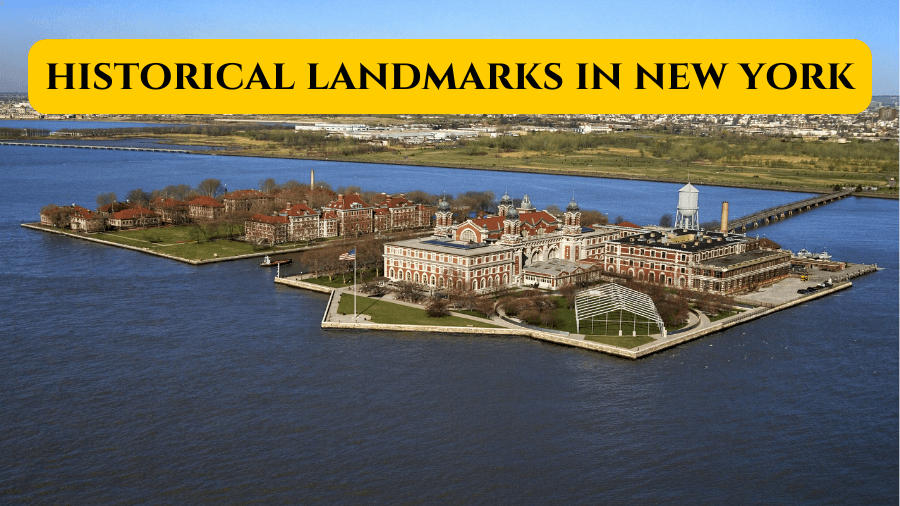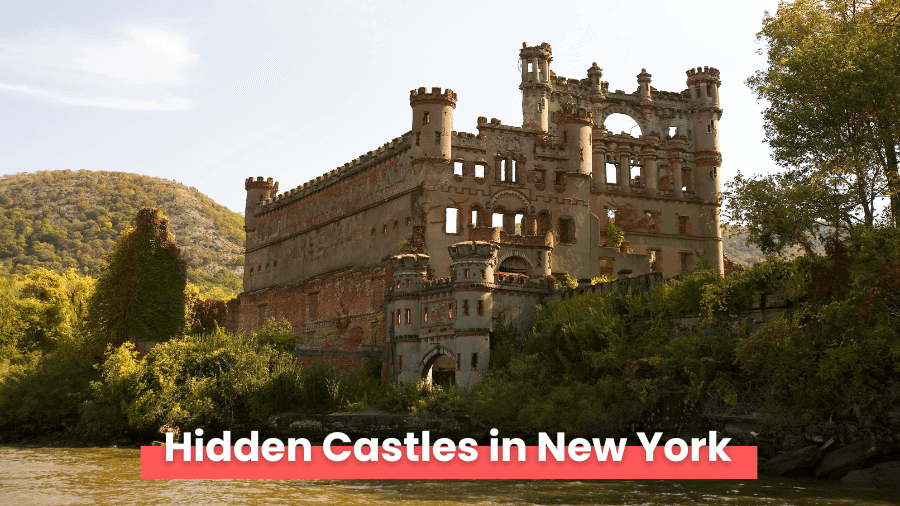New York might be famous for skyscrapers, pizza, and Broadway, but it’s also rich in history across the state.
From battlefields where the American Revolution was won to the very spot where the fight for women’s rights began, there are remarkable places that shaped the country as we know it today.
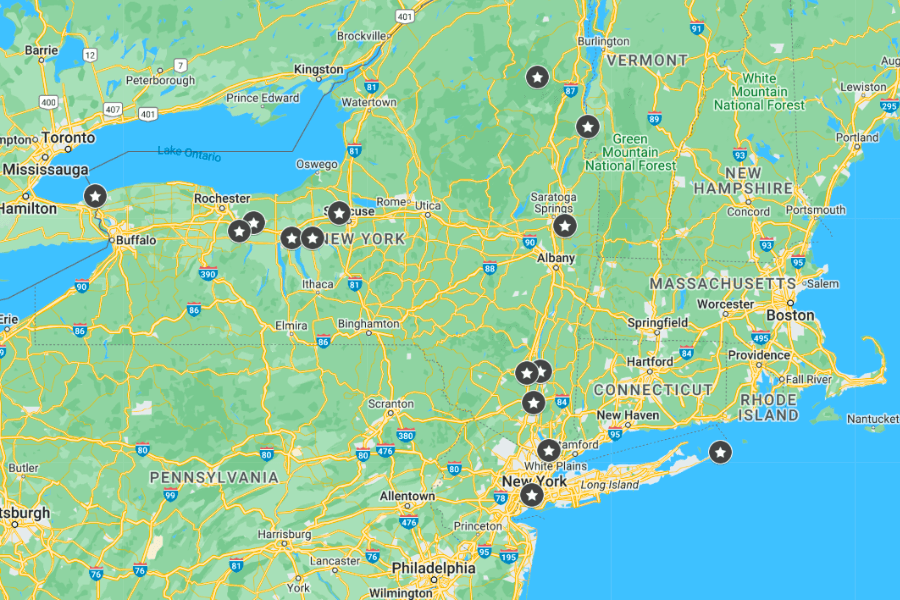
You can climb to the top of an old lighthouse, walk through a mansion owned by one of the wealthiest families, or stand inside the room where major decisions about America’s future were made.
Whether you’re into history or just want to check out some cool spots, these 15 landmarks bring history to life in the most exciting way!
Keep reading to see which ones you need to add to your bucket list!
1. Fort Ticonderoga
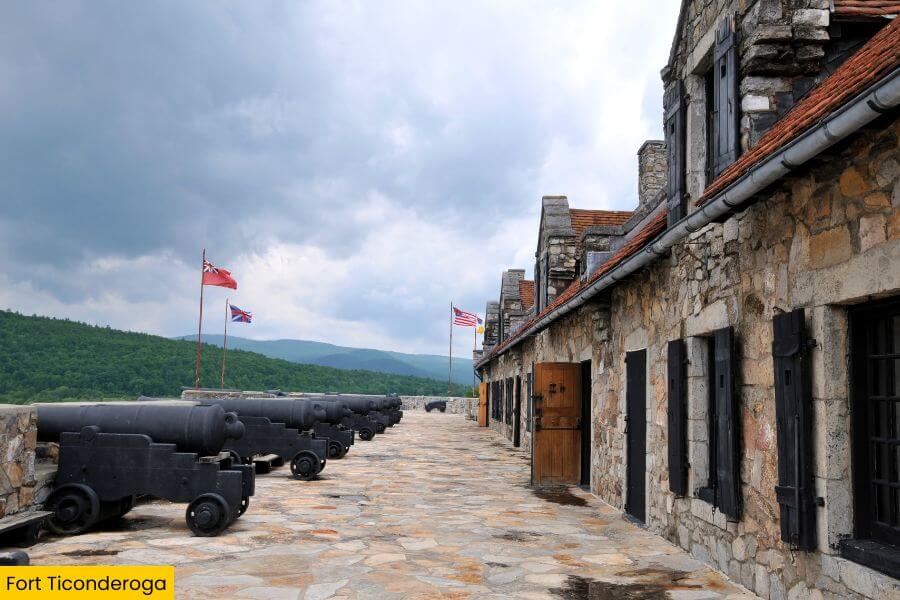
Fort Ticonderoga, located at the southern tip of Lake Champlain in upstate New York, was a key battleground during the French and Indian War as well as the American Revolution.
You can walk through the fort’s stone walls, enjoy beautiful views of Lake Champlain from various vantage points, and even see live cannon-firing demonstrations.
Don’t miss the museum with old weapons, uniforms, and artifacts or the King’s Garden, where soldiers once grew their food.
In the summer, you can also watch reenactors dressed as 18th-century soldiers go about their daily routines.
2. Women’s Rights National Historical Park
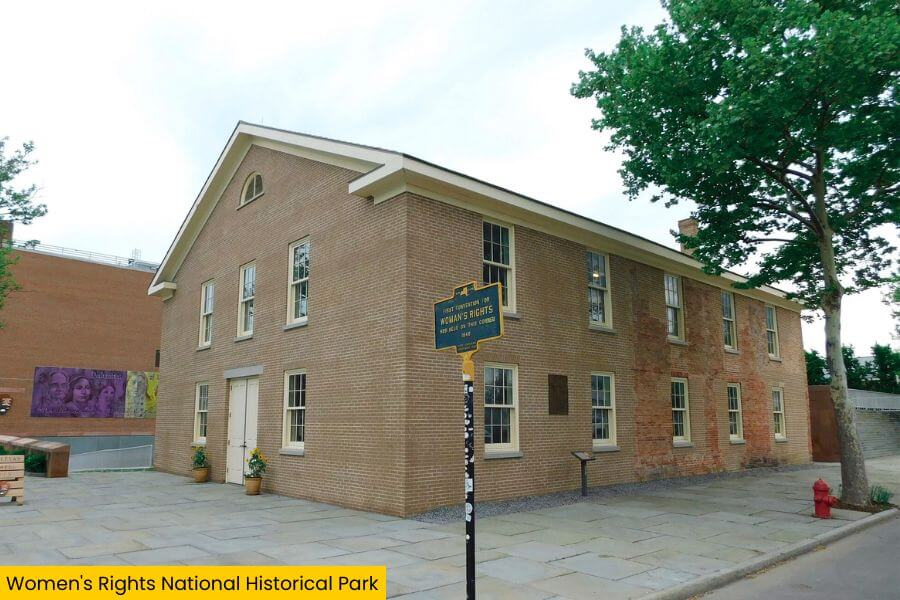
In the small town of Seneca Falls, Women’s Rights National Historical Park marks the spot where the fight for women’s equality began in 1848.
You can stand inside the Wesleyan Chapel, where Elizabeth Cady Stanton and other activists held the first women’s rights convention, and explore exhibits about the original Declaration of Sentiments that called for equal rights.
The park also includes Stanton’s home, where she wrote fiery speeches and planned protests, along with the Waterwall, a powerful tribute to the generations of women who kept pushing for change.
3. Erie Canal
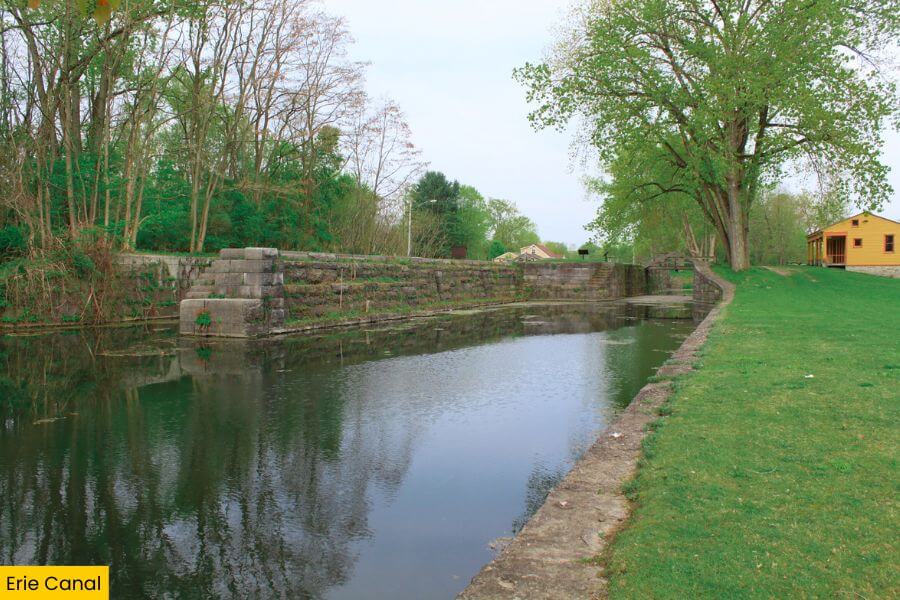
The Erie Canal changed everything when it opened in 1825, turning New York into a major trade hub and making travel much easier between the Hudson River and the Great Lakes.
Today, you can walk or bike along the old towpaths where mules once pulled boats, take a scenic cruise through one of the historic locks, or visit the Erie Canal Museum in Syracuse to learn about how this massive project was built.
For a real throwback, head to Lockport and ride a boat through the original 19th-century locks, where you’ll see the hand-cut stone walls up close and watch the water levels rise and fall just like they did two centuries ago.
4. Home of Franklin D. Roosevelt National Historic Site
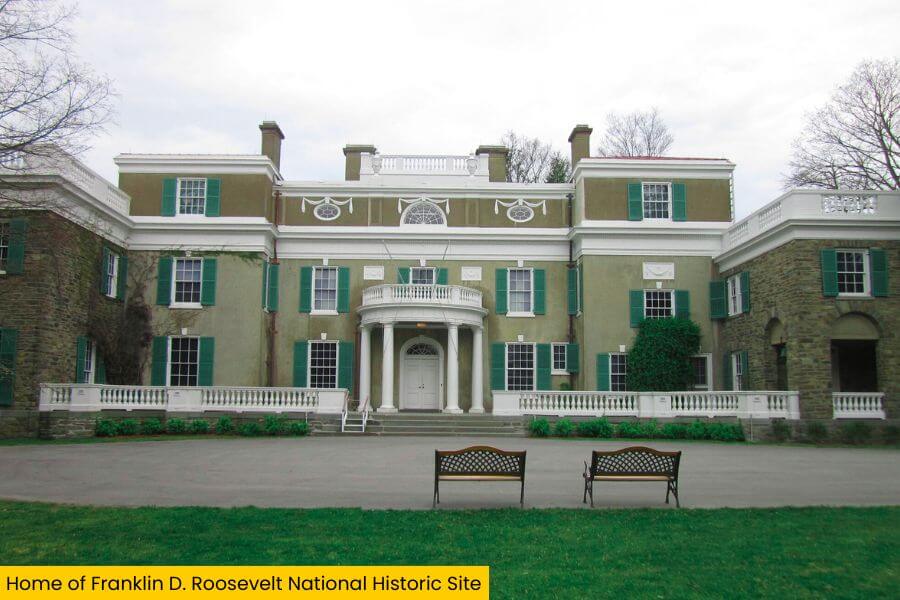
In Hyde Park, the Home of Franklin D. Roosevelt National Historic Site gives you a glimpse into the life of the only U.S. president elected four times.
You can tour Springwood, the estate where FDR was born and lived most of his life.
Walk through the Franklin D. Roosevelt Presidential Library and Museum which is filled with books and memorabilia, and explore his personal study.
The site also includes the beautiful rose garden where Franklin and Eleanor Roosevelt are buried, plus trails with views of the Hudson River that FDR once explored himself.
5. Ellis Island
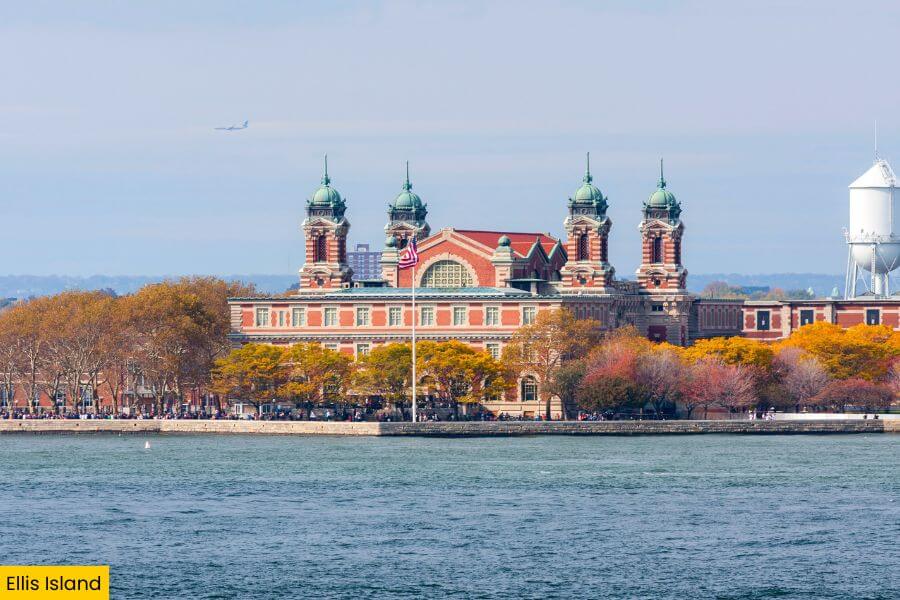
Ellis Island was the gateway for over 12 million immigrants coming to America between 1892 and 1954, and walking through it today feels like stepping into their story.
Inside the main immigration hall, you can stand where families once waited for inspections, see old passenger records, and hear real stories of people who arrived with nothing but hope and a suitcase.
Don’t skip the Hard Hat Tour of the abandoned hospital buildings, where doctors treated sick arrivals—it’s eerie, fascinating, and gives a whole new perspective on what immigrants went through to start a new life.
6. Old Fort Niagara
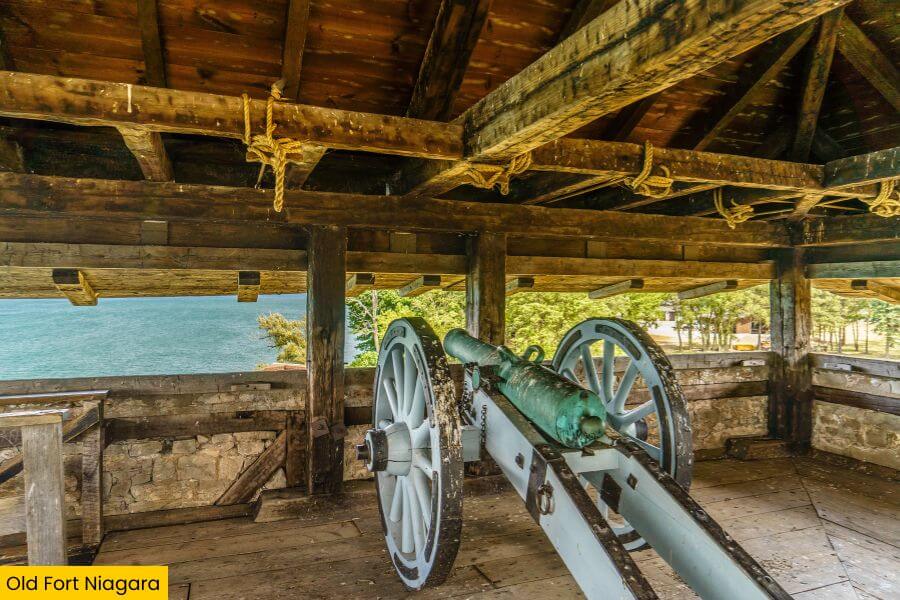
Located on the edge of Lake Ontario, Old Fort Niagara has been protecting the Niagara River for over 300 years, with a history of battles between the French, British, and Americans.
You can step inside the 1726 French Castle, one of the oldest buildings on the Great Lakes, watch costumed reenactors fire muskets, and explore the fort’s museum with artifacts like cannonballs.
Climb up the stone towers for a view that once helped soldiers spot enemy ships, and if you’re there in summer, catch the impressive reenactments where hundreds of actors recreate 18th-century battles.
7. Smith Family Farm

Smith Family Farm in Palmyra is where Joseph Smith, the founder of the Church of Jesus Christ of Latter-day Saints, grew up and claimed to have his first visions that led to the creation of the Mormon faith.
You can tour the restored 1820s farmhouse, walk through the barn and orchard where the Smith family worked, and visit the Sacred Grove, the forest where Joseph said he saw God and Jesus.
Whether you’re interested in religious history or enjoy exploring historic sites, this spot offers a unique look at the early 19th-century.
8. Washington’s Headquarters State Historic Site
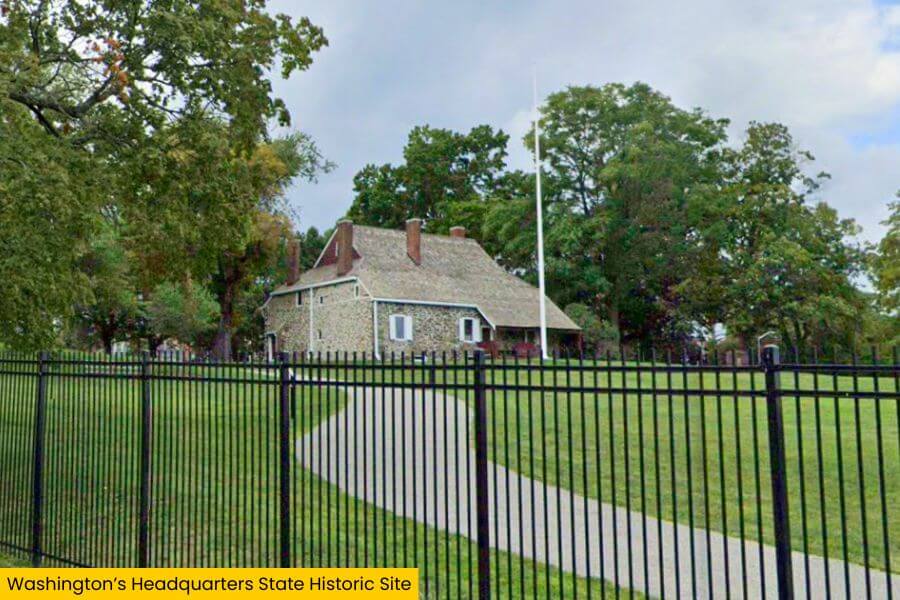
Washington’s Headquarters State Historic Site in Newburgh is where George Washington made some of his biggest decisions during the final years of the American Revolution.
You can explore the Hasbrouck House, the stone mansion where he lived for about 16 months, see exhibits with artifacts from that era, and stand in the room where he rejected the idea of becoming king—shaping the future of the country.
Outside, climb the Tower of Victory for stunning views of the Hudson River, and if you visit in spring, you might catch one of the live Revolutionary War reenactments.
9. Kykuit, the Rockefeller Estate
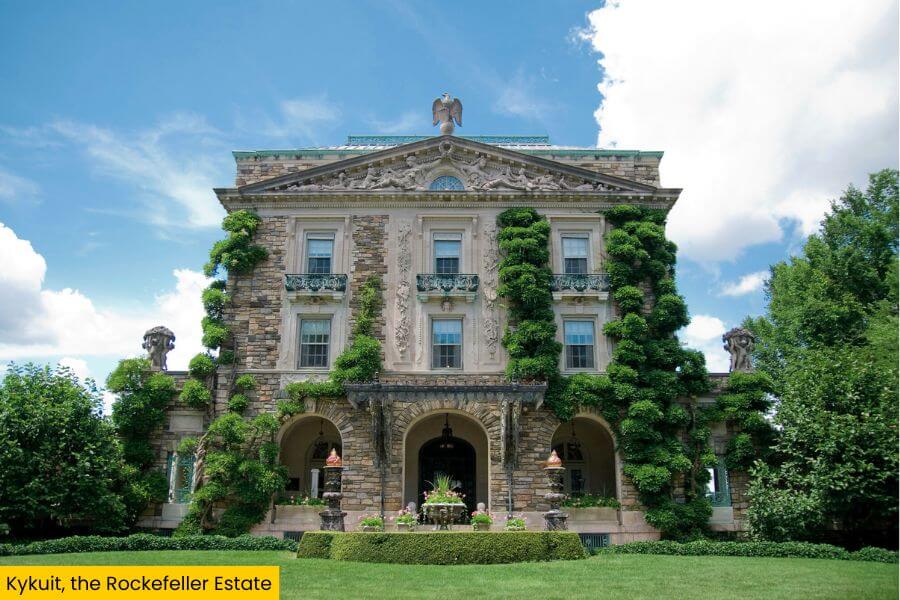
Kykuit, the Rockefeller Estate in Sleepy Hollow, was home to four generations of the Rockefeller family and is packed with history, art, and unbelievable views of the Hudson River.
You can tour the mansion’s elegant rooms, stroll through gardens with fountains and sculptures, and explore the underground galleries showcasing Picasso tapestries and other rare artworks.
Don’t miss the old carriage house, where classic cars and horse-drawn coaches show how one of America’s wealthiest families traveled in style.
10. Saratoga National Historic Park
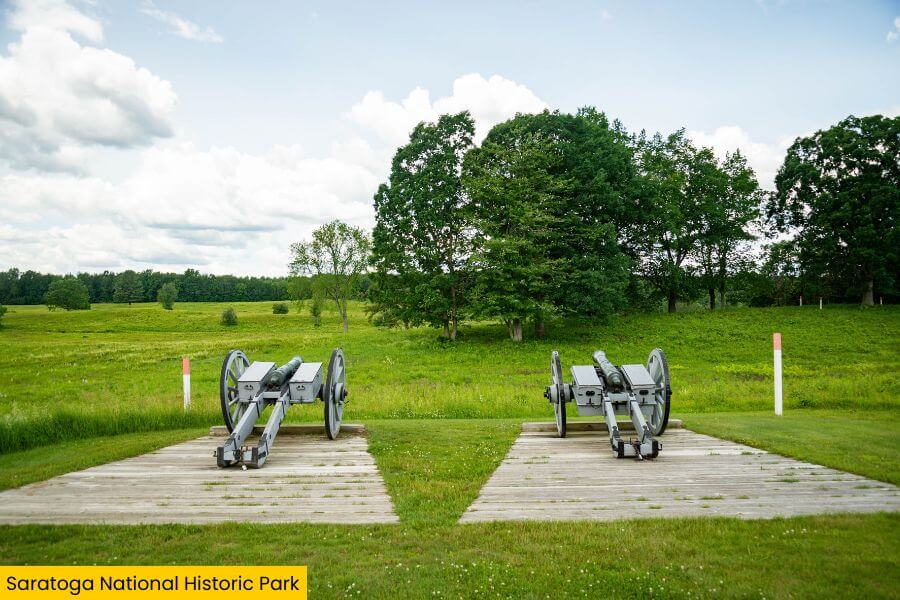
Saratoga National Historical Park marks the site of the 1777 Battles of Saratoga, where American forces won a huge victory that helped turn the tide of the Revolution.
You can drive the battlefield tour road, stopping at key spots where soldiers clashed, walk the same trails troops once marched, and climb the Saratoga Monument in nearby Victory for a sweeping view of the Hudson Valley.
Be sure to check out the visitor center, where interactive exhibits and a massive battle map show exactly how the fighting played out and why this win convinced France to support American independence.
11. Harriet Tubman National Historic Park
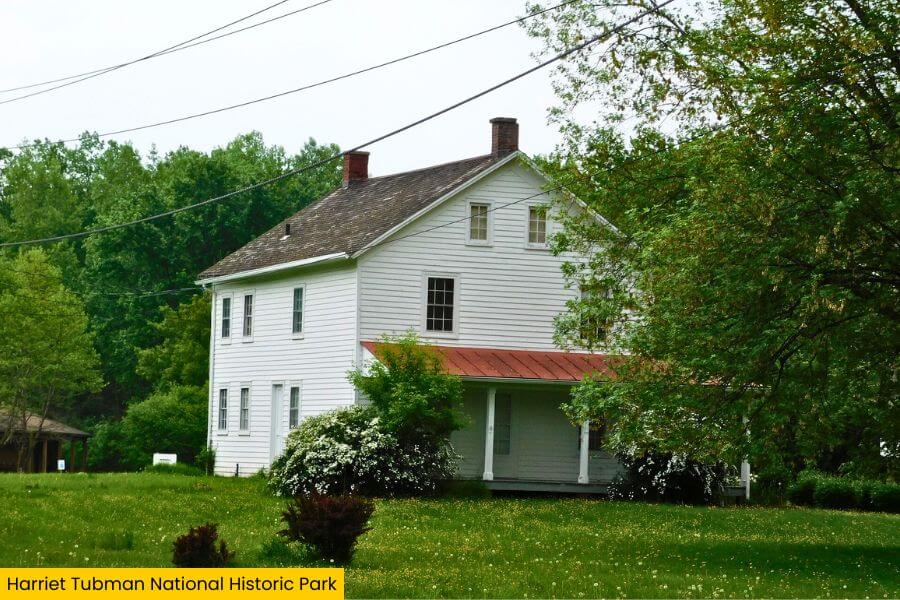
Harriet Tubman National Historical Park in Auburn honors the life of the famous abolitionist who risked everything to lead enslaved people to freedom on the Underground Railroad.
You can tour her home, where she spent her later years, see the church she helped build, and see the Harriet Tubman Home for the Aged, which she founded to care for formerly enslaved people.
Her gravesite is just down the road in Fort Hill Cemetery, where people still leave flowers and tokens to honor her bravery and lifelong fight for justice.
12. John Brown Farm State Historic Site

John Brown Farm State Historic Site in Lake Placid is where the famous abolitionist lived before his raid on Harpers Ferry and where he was buried after his execution in 1859.
You can walk through his simple farmhouse, see period furnishings, and visit the barn, where exhibits highlight his fight against slavery.
The peaceful grounds include a trail through the Adirondack woods and a gravesite where Brown and his followers are buried, making it a meaningful place to reflect on his legacy.
13. Montauk Point Lighthouse
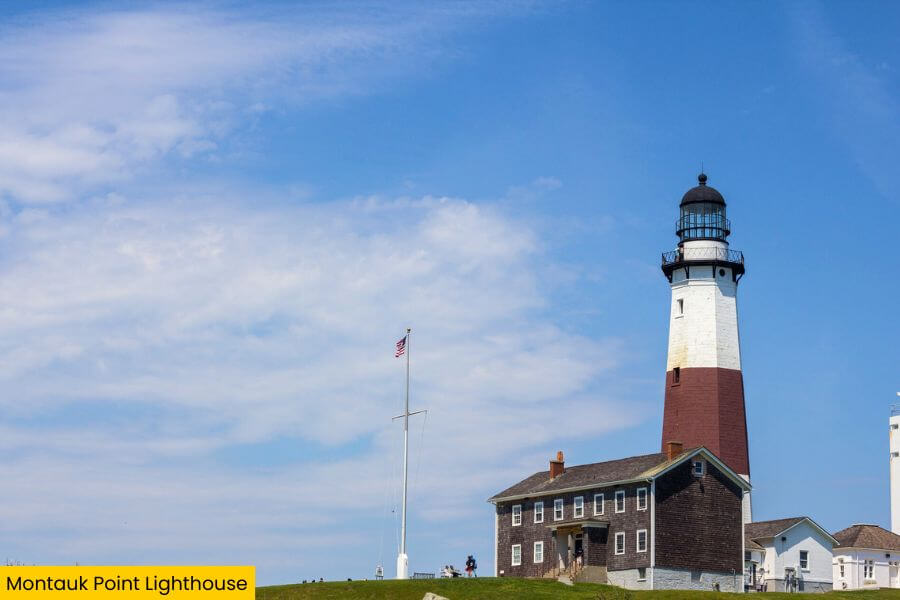
Montauk Point Lighthouse, standing at the very tip of Long Island, is the oldest lighthouse in New York and has been guiding ships since 1796.
You can climb the iron steps to the top for a panoramic view of the Atlantic Ocean, explore the museum with shipwreck stories and old navigation tools, and walk along the rocky shoreline.
It’s also a great spot for spotting seals in the winter or just watching the sun rise over the water, just like sailors have for over two centuries.
14. Historic Huguenot Street, New Paltz
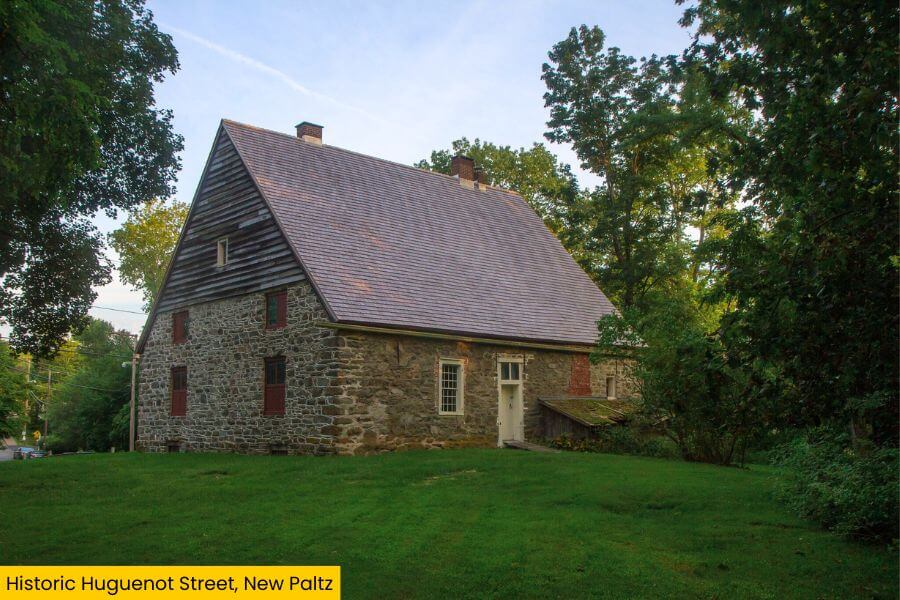
Historic Huguenot Street in New Paltz takes you back to the late 1600s, when French Huguenot refugees built a small community here along the Wallkill River.
You can tour seven original stone houses, step inside a reconstructed 1717 church, and see artifacts like old journals, clothing, and tools that show how early settlers lived.
The street itself feels like a time capsule, with shaded walkways, colonial-era gardens, and even a historic burial ground where some of the town’s first residents are buried.
15. Ganondagan State Historic Site
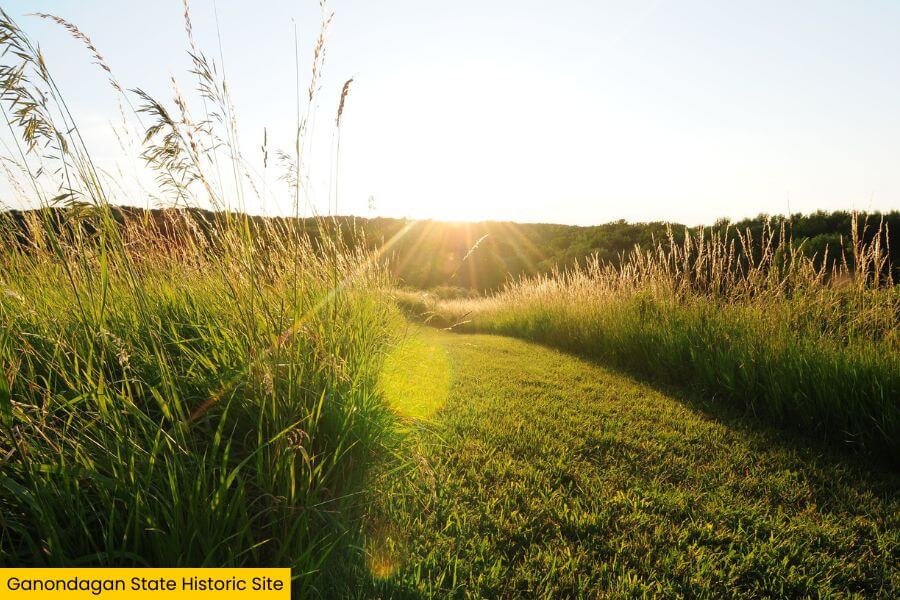
Ganondagan State Historic Site in Victor tells the story of the Seneca people, who thrived here long before European settlers arrived.
You can walk through a full-size replica of a 17th-century Seneca longhouse as well as explore miles of trails where their village once stood.
Also make sure to visit the Seneca Art & Culture Center to see Haudenosaunee (Iroquois) artifacts, storytelling exhibits, and traditional crafts.
Each summer, the site hosts a Native American dance and music festival, where you can enjoy vibrant performances, try traditional foods, and learn more about the culture that continues to thrive today.
Related Posts

